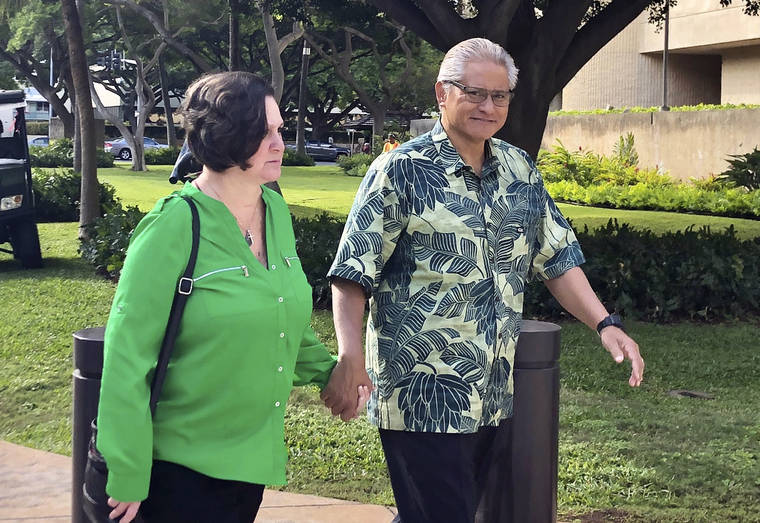HONOLULU — The public defender who was instrumental in uncovering allegations that a Hawaii law enforcement power couple conspired to frame a relative for a mailbox theft testified Friday he was suspicious about how easily it appeared to be removed in surveillance footage.
“The mailbox looked extremely loose,” making him suspect it was a set-up, federal defender Alexander Silvert testified in the trial for retired Honolulu police chief Louis Kealoha and his wife Katherine Kealoha, a former deputy prosecutor. Silvert represented Katherine Kealoha’s uncle Gerard Puana, who the Kealohas accused of stealing their home mailbox in 2013.
U.S. prosecutors say the Kealohas abused their power and framed Puana to keep him from revealing fraud that financed the couple’s lavish lifestyle.
Silvert asked authorities for more footage from the grainy recording that showed a man hoisting the mailbox into a car. He said he was only given a half-hour before and after the mailbox was removed. It seemed improbable to Silvert that given modern technology, the police department, which installed the surveillance at the then-chief’s home, wouldn’t have more footage available.
The Kealohas’ plot began to unravel because of a “tenacious” Silvert, Michael Wheat, a special federal prosecutor, told jurors when the trial began. “Mr. Silvert dug into every fact and detail that he could.”
There were various inconsistencies that made Silvert concerned, he said. Katherine Kealoha told police the mailbox was valued at $380, Silvert said, but Google maps images and family photos showed that the mailbox that was in front of the Kealoha home was different than she reported, Silvert said.
The man who designed the Kealohas’ mailbox testified earlier that it wasn’t worth as much as Kealoha claimed.
A 911 call reporting the mailbox theft was made the afternoon of June 22, 2013. But a police report said a technician recovered the footage from the home that morning.
It was strange that evidence was seized and in police custody before a crime was even reported, Silvert said.
When Puana’s case went to trial in 2014, Silvert was prepared to present his theory that his client was framed. The second witness was Louis Kealoha, who gave improper testimony about Puana. “I slammed my hand on the table,” Silvert recalled. The judge declared a mistrial and the case was later dismissed.
Silvert then took his evidence to federal authorities, which prompted a two-year investigation that led to an indictment against the Kealohas and current and former officers in 2017.


